We live in a world of change, and Britain’s Biggest Brands is no exception. After years of sticking with one formula, The Grocer has shaken up the methodology. In this new top 100, the rankings take into account masterbrands. So if the masterbrand appears on front of pack, as it does on Cadbury Dairy Milk, the Dairy Milk sub-brand counts towards the overall value of Cadbury. If it doesn’t appear - for instance Galaxy makes no mention of manufacturer Mars on the front of pack - Galaxy doesn’t count towards Mars.
Why? First, consistency. Our previous methodology threw up a number of anomalies. Birds Eye was counted as one brand, for example, while products from Heinz, Kellogg’s and Muller, that would otherwise be indistinguishable from own-label, were split into various sub-brands or segmented by category. Having one objective measure - front of pack - ensures equal treatment.
Britain’s Biggest Brands 2018: see the full ranking
Second, owners increasingly think of brands, and manage them, and promote them, under one umbrella or masterbrand approach, rather than as a collection of sub-brands.
Heinz is the perfect illustration. There may be ‘57 varieties’ under the Heinz name, but whether it’s soup, ketchup or beans, the masterbrand “is a wonderful asset,” says Steve Chantry, commercial director at Kraft Heinz UK & Ireland. “It allows us to leverage the strength, trust and love for the masterbrand in driving growth through sub-brands that are typically tighter in scope and category footprint.”
Of course it’s not quite that simple, requiring all the “sub-brand initiatives including innovation, communication and activation” to work together to “strengthen the masterbrand as well as borrow from it.” But he believes Heinz has “seen great benefits in thinking holistically… we enjoy a wonderful halo across the masterbrand, so when we advertise Heinz Tomato Ketchup, the benefit is seen across other sauces as well as our beans and soup portfolios.”
Who’s up?

▲21
76 (97) Highland Spring
Having ramped up marketing with its £5m Brave By Nature campaign, Highland Spring is soaring ahead of its bottled water rivals. The brand’s fizzy SKUs will be next in the spotlight, positioned as something “a little bit special”.
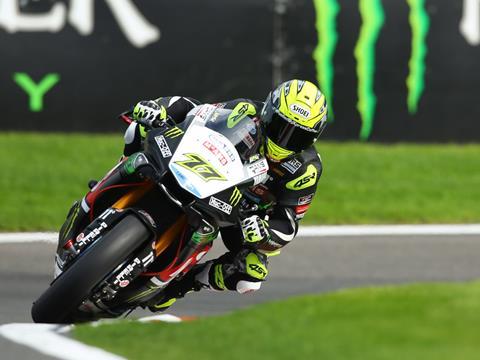
▲18
38 (56) Monster
There’s no stopping the rise of Monster.The popularity of zero-sugar variants helped add an extra £23m to sales of Coca-Cola’s energy drink brand. There’s also been plenty of NPD in the form of non-carbonated range Monster Hydro and the new low-sugar black grape variant LH44, launched with F1 star Lewis Hamilton.

▲16
66 (82) McCoy’s
Yes, part of McCoy’s stellar growth is down to price, which has risen by an average of 3.1%. But there has been lots of innovation to drive sales, too. Most notably, the launch of McCoy’s Chips last February added £9.1m to the brand’s value. Plus there are plenty of “exciting” developments planned for this year, which has already seen the launch of a paprika flavour.
Who’s down?

▼13
90 (77) Surf
The laundry category has had a tough time over the past year, and few know this better than Surf. The brand has lost £8m in sales despite pushing ahead with NPD such as dual chamber capsules and exotic new fragrance Surf Caribbean Crush.
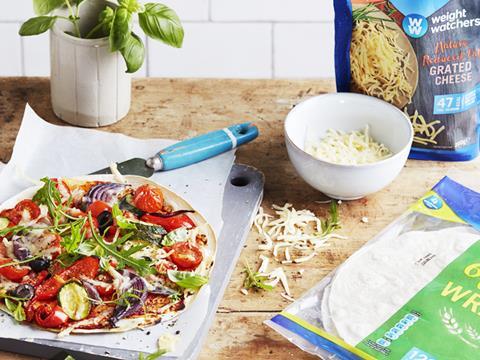
▼11
96 (85) Weight Watchers
As diets fall out of fashion, so has Weight Watchers. The brand has struggled to keep up with the new focus on wellbeing as opposed to calorie content. But in a move to tempt the new healthy living consumer, it has pledged to ditch all artificial ingredients by 2020.
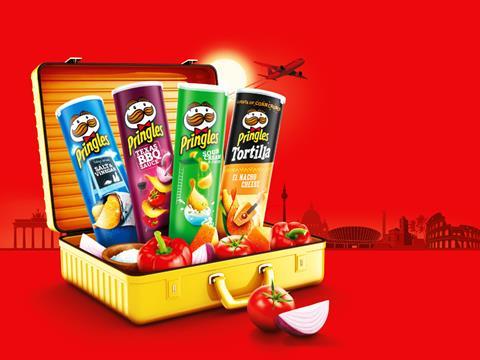
▼11
44 (33) Pringles
Have consumers stopped popping? The iconic crisp brand has shed £18.7m in value, as it shifted 22 million fewer units than the previous year. The increased competition in the snacking market can’t have helped matters; while rivals such as Walkers and Hula Hoops are churning out the NPD, Pringles has cut back a number of its extensions including Tortillas.
According to Geoff Wilson, brand strategy director at brand agency Household, which works with Tesco, the fact “we’re increasingly seeing P&G or Unilever logos accompanying ads for their products” helps to indicate quality and authenticity in their ‘houses of brands’.”
Justin Clouder, strategy partner at TBWA London, says this strategy should deliver a “marketing nirvana” of a “segmented, structured portfolio of brands benefiting from a halo of common values”. Plus, “on PowerPoint it looks terrific”.
Robert Jones, head of new thinking at Wolff Olins, believes “more than ever, masterbrands are the best approach” if you get the balance right. “In a fragmented world, unity matters. And simplicity cuts through.”
It is this thinking that persuaded Coca-Cola to adopt a masterbrand approach in 2015. “Research showed not everyone understood the different options and the benefits of each drink,” says Simon Harrison, customer marketing director at Coca-Cola European Partners. This was especially true of Coca-Cola Zero. Bafflingly, 50% of consumers had no idea it contained zero sugar. But since the masterbrand approach, the variant (now named Coca-Cola Zero Sugar) has grown “exponentially,” claims Harrison. “Zero is the fastest-growth cola brand in GB and worth £145m.”
One key element of Coke’s masterbrand strategy was that the three varieties - plus the now defunct Coke Life - would all be united in advertising. But recent spots for Zero and Diet Coke have seen them advertised individually with very different personalities: Diet Coke has a millennial talking about yurts; Coke Zero has a pensioner dabbling in motorcycle racing. So is the strategy starting to wobble?
It’s just evolving, says Harrison. “There are times when all three brands are marketed together under the Coca-Cola masterbrand, like our summer campaign last year, or featured in our one brand lock-up that closes our advert like our recent Coca-Cola Zero Sugar TVC. And Diet Coke has its own brand personality.”
Still, a masterbrand strategy doesn’t work for everyone. “Take Mars,” says Stephen Cheliotis, CEO of The Centre for Brand Analysis and chairman of Superbrands. “Consumers typically discuss its sub-brands, like Maltesers, rather than the parent brand, and Mars wouldn’t want it any other way. When a masterbrand has such a far-reaching portfolio of products, finding a common denominator that wraps up all the sub-brands is extremely difficult.”
Another Mars example is the launch of its healthy snack Goodness Knows, which makes no attempt to capitalise on the brand power of the confectionery giant. “Bigger brands are seeing the value in creating very separate brands that target consumers looking for healthy and ethical products, commonly associated with startups,” says JP Hunter, head of design at Webb deVlam, which works with brands like Kit Kat and Ryvita. “Typically, consumers who buy into wellness products are sceptical of bigger brands and their ability to deliver the benefits they’re seeking.”
It’s about “knowing how far your masterbrand can ‘stretch’ and where you have credibility,” says Caroline Hawkings, divisional director of home and food at research and insight agency Morar HPI, which works with Lucozade and Heineken. “Coke was built around one product that became so iconic that when it tried to move into something so at odds with its brand, like bottled water, it didn’t have the credibility.”
Where a masterbrand strategy works well is when “all products are in one category, like Hovis, or are held together by an ingredient or taste profile like Cadbury Dairy Milk, or where the consumer or occasion is the same across categories, like Heinz,” says Elizabeth Finn, MD at brand strategy and packaging design agency Cowan.
“But even some of these big brands get it wrong. Cadbury’s hot chocolate drink, Highlights, uses the Cadbury Dairy Milk purple. But it has a dark chocolate version that uses the red Bournville brand. Which brand and taste are consumers buying? The same question applies when considering CDM with Oreo pieces. Both are masterbrands, but which is the stronger?”
As TBWA London’s Clouder says, the “messy” reality of consumer buying habits can sometimes obstruct a perfect theoretical masterbrand. “Every masterbrand strategy is riven with exceptions. Years of innovation, mergers, launches and variant proliferation can result in a mishmash of sub-brands with varying degrees of connection to the nominal master.”
Perhaps that explains why so many seem to switch between the two approaches, like Birds Eye and Coca-Cola have done (and arguably Coke continues to do). Certainly Birds Eye, which deployed a masterbrand strategy from 2010 to 2016 (dubbed ‘The Food of Life’) says “shifting from a top-down masterbrand approach to a bottom-up ‘pillar brand’ model revitalised sales.”
Birds Eye marketing director Steve Challouma says “as 2017 progressed and the new strategy was rolled out, Birds Eye overtook Heinz in above-the-line investment, up 92% year on year to become the biggest spender amongst fmcg savoury food brands. On our core icons, we’ve seen value growth across the board with value rises in fish fingers, peas and chicken dippers. Turnaround and growth can be largely attributed to the new marketing approach behind products.”
Jones believes switching can make sense. “Most companies today are playing complex games with their brands, rarely keeping the status quo, and constantly experimenting,” he says. Few are simply a “house of brands”. Most are hybrids, simplifying and unifying in most areas, but also starting up new brands in others.”
Britain’s Biggest Brands 2018: see the full ranking
“More than ever, business is about mixing strategy with opportunism. Tastes change overnight, consumers are no longer unthinkingly loyal. So rather than one ‘big idea’, it can be better to have many smaller ideas.”
As media proliferates, there are plenty of avenues to test out smaller ideas. Birds Eye has invested £22m in activity “spanning above-the-line, digital, PR, social and online media and results have been overwhelmingly positive”.
Heinz is similarly enthusiastic about using alternatives to TV (it launched Heinz Five Beanz on Facebook to only 11 million people). The wide array of channels available to connect with consumers sums up the “unprecedented change,” says Chantry. “While TV remains a key channel, this is changing. We are increasing our spend on digital and social, and also developing bespoke creative that we believe consumers will engage with.”
Ultimately, he believes these “new channels provide increasing opportunities to be even more targeted and relevant to consumers.
“And this is the key area of opportunity as we bring new campaigns to market, this year and beyond.”
Methodology and notes
Brand values in this report are the sum of value sales of all products across multiple categories trading under one name, specified on the front of pack. For example, Coca-Cola is the sum of Classic Coke, Diet Coke, Coke Zero Sugar and all flavour variants. In instances where there is a masterbrand on the front of pack alongside a sub-brand - for example, Nestlé Kit Kat - the masterbrand will be taken as the primary brand. But in instances where the masterbrand is not visible on pack - for example, Mars’ Galaxy - the sub-brand will be counted as a brand in its own right.
Arla: products from sub-brands with the Arla name on, including Lactofree and Cravendale. Excludes Anchor and Lurpak.
Cadbury: products sold under the Cadbury brand including sub-brands such as Dairy Milk. Includes cakes, biscuits, potted desserts, drinking chocolate and ice cream.
Danone: all yoghurt products across the Activia, Actimel, Danio, Oykos and Light & Free sub-brands.
Fairy: products from all sub-brands across the detergents, dishwash and fabric conditioners categories
Heinz: all products sold under the Heinz name spanning the babyfood, soup, ketchup, beans and frozen categories.
Kellogg’s: products across all sub-brands in the cereals, cereal bars and snacking categories
Müller: products sold under the Müller milk and yoghurt brands including Wiseman, The One, Dairy Crest Milk, Frijj, Müller Corner and Müllerlight. Excludes Dairy Crest cheese
Nestlé: products that bear the Nestlé brand on the front of pack including cereals, Kit Kat and other confectionery such as Quality Street and Smarties. Excludes Nescafé.
Purina: products sold under Purina sub-brands including Felix, Gourmet, Bakers, Go Cat, Winalot, One and Bonio.
Walkers: products from all sub brands including Max, Market Deli and Sensations
Wrigley’s: products from all Wrigley’s sub-brands including Extra, Airwaves, Doublemint and Spearmint.
Young’s: includes fresh and frozen branded Young’s products
The data in Britain’s Biggest Brands 2018 is for the period 52 w/e 30 December 2017. Data is taken from Nielsen’s Scantrack service. Scantrack monitors weekly sales from a nationwide network of EPoS checkout scanners covering the grocery and convenience markets.
Nielsen’s retail measurement service provides comprehensive information on actual purchases, market shares, distribution, pricing and promotional activities, and is the fastest and most accurate measure of consumer sales. Nielsen’s services are always dynamic and are constantly being improved to reflect the grocery marketplace.
Nielsen Total Coverage now includes EPoS data from Wilkinson, Superdrug and Boots, and excludes any estimation for Aldi and Lidl. Nielsen provides clients with consultation on product innovation, retail and shopper strategies, market structure and segmentation, brand and portfolio management, marketing performance, pricing and promotional strategies, advertising effectiveness and social media intelligence, based upon expertise and data assets.
Nielsen’s retail measurement services provide the fmcg industry with expert information and analysis of consumers, categories and the retail marketplace. For the purposes of this report, a brand is defined as all products within categories that are sold and marketing under a given brand name specified on front of pack. The report includes grocery and household categories and does not include tobacco, alcohol, personal care or OTC.
© William Reed Business Media Ltd 2018.
All Rights Reserved. ISSN 0017-4351. Printed by Wyndeham Group. For more information: William Reed Business Media Ltd, Broadfield Park, Crawley, West Sussex, RH11 9RT. Tel: 01293 613400. Web: www.william-reed.co.uk
Copyright:
Britain’s Biggest Brands report was compiled by The Nielsen Company exclusively for The Grocer magazine/William Reed Business Media. No reproduction of this list or data within, full or in part, for commercial use is permitted without prior consent of The Nielsen Company.







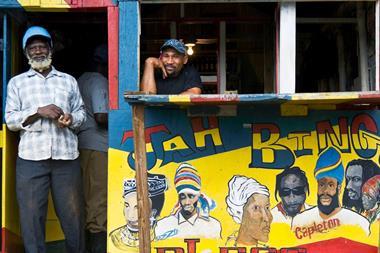
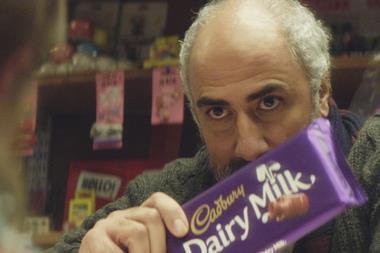
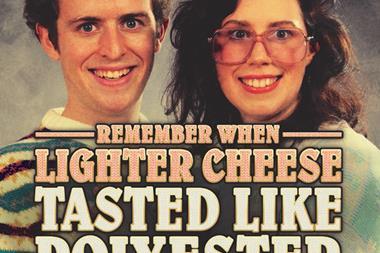
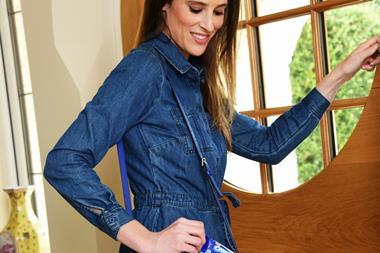
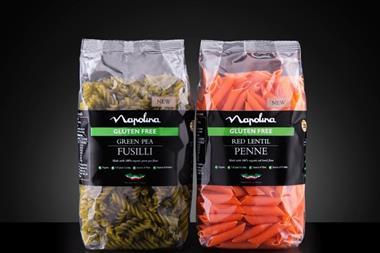
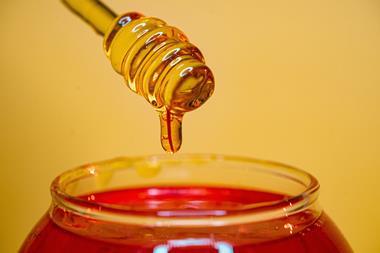
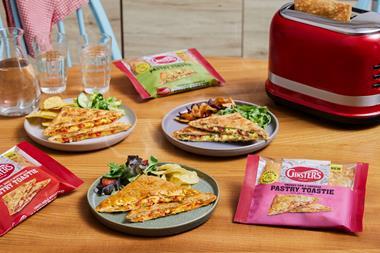

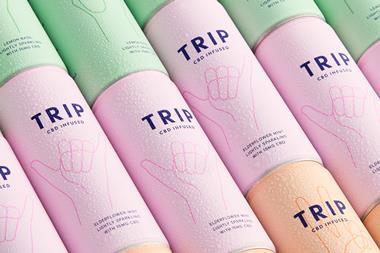
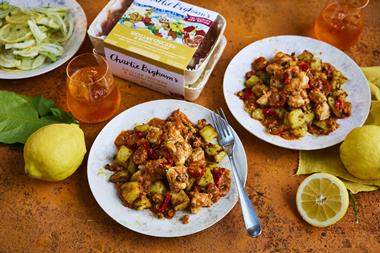
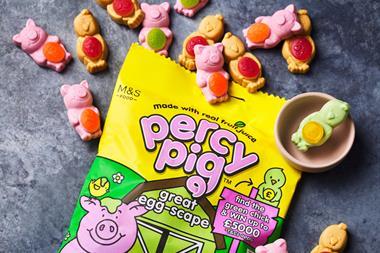
No comments yet